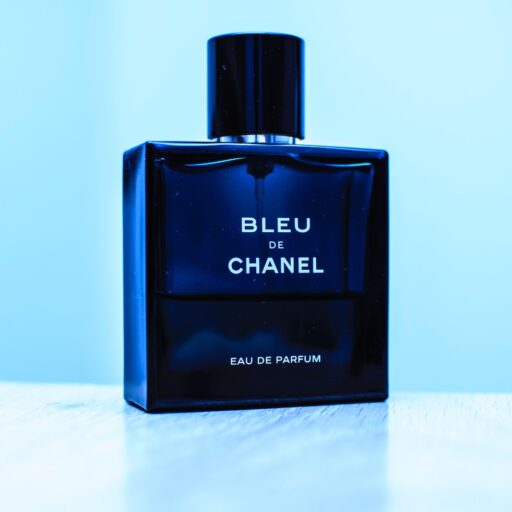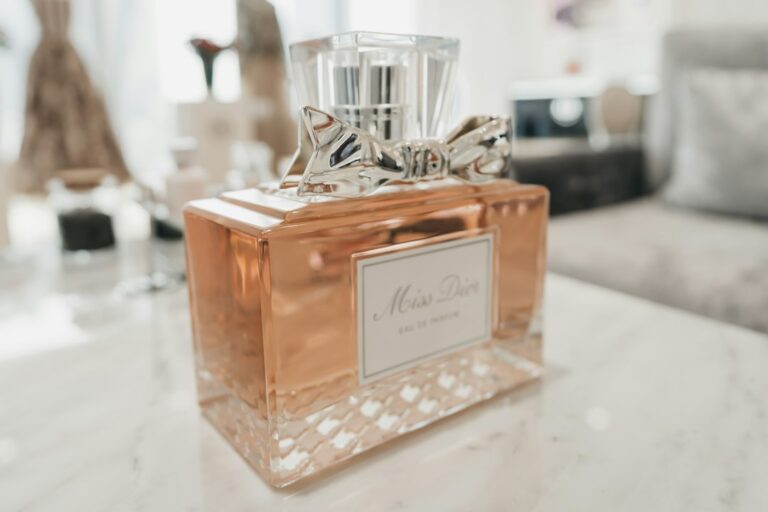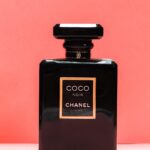Support our educational content for free when you purchase through links on our site. Learn more
How Many Perfume Brands Are There in the US? Discover 61,587! 🌟 [2025]

Have you ever wondered just how many perfume brands are vying for your attention in the vast and fragrant landscape of the United States? With over 61,587 companies contributing to this aromatic industry, the choices can feel overwhelming! From luxurious designer labels to artisanal niche brands, the options are as diverse as the scents themselves. In this article, we’ll dive deep into the world of perfume brands, exploring their history, market dynamics, and what makes each one unique.
Did you know that the US accounts for about 30% of the global perfume market? That’s a staggering figure that highlights not only our love for fragrance but also the incredible variety available. Whether you’re a seasoned fragrance aficionado or just starting your scent journey, this guide will help you navigate the myriad of options and find the perfect perfume that resonates with your personal style.
Key Takeaways
- Diverse Landscape: The US perfume market features over 61,587 brands, including designer, niche, and indie labels.
- Iconic Brands: Top brands like Chanel, Dior, and Gucci dominate the market, but niche brands are gaining traction.
- Consumer Trends: Sustainability and personalization are key trends influencing consumer choices in the fragrance industry.
- Exploration is Key: Don’t hesitate to experiment with different brands and scents to discover your signature fragrance.
Ready to explore the world of fragrances? 👉 Shop top perfume brands like Chanel | Dior | Gucci and find your new favorite scent today!
Table of Contents
Quick Tips and Facts
The Landscape of Perfume Brands in the US
How Many Perfume Brands Are There in the US?
Top 10 Perfume Brands Dominating the Market
The Evolution of Fragrance: A Historical Perspective
Understanding the Types of Perfume Brands
The Role of Niche vs. Designer Brands
Consumer Preferences: What Drives Your Choices?
Spotlight on Iconic Fragrances: The Classics
Emerging Trends in the US Perfume Market
Perfume Brand Sustainability: A Growing Concern
How to Choose the Right Perfume Brand for You
The Future of Perfume Brands in the US
Conclusion
Recommended Links
FAQ
Reference Links
Quick Tips and Facts
- Did you know the United States holds a significant portion of the global perfume market? bolddata.nl states that the US accounts for approximately 30% of the worldwide perfume industry! That’s a lot of fragrance lovers! 🇺🇸
- Ever wondered what the difference is between eau de parfum and parfum? The concentration of fragrant oils is key! Learn more about perfume types here!
- Looking for a unique scent? Niche perfume brands are gaining popularity, offering distinctive and often handcrafted fragrances. Explore niche brands in our fragrance reviews!
The Landscape of Perfume Brands in the US
The US perfume market is a vibrant and diverse landscape, with a rich history and a constantly evolving present. From iconic designer houses to emerging indie brands, the options for fragrance enthusiasts are seemingly endless. But this abundance can also be overwhelming. How many perfume brands are there really, and what factors contribute to this vast and fragrant world?
How Many Perfume Brands Are There in the US?
While an exact number remains elusive, data from bolddata.nl reveals a staggering figure: over 61,587 companies in the US are classified as part of the perfume industry. This includes manufacturers, wholesalers, and retailers, reflecting the industry’s complexity and reach. To learn more about how many perfume brands exist globally, check out this insightful article: How many brands of perfume are there?
Factors Contributing to the Abundance:
- Low Barriers to Entry: Compared to industries with high capital requirements, starting a perfume brand is relatively accessible. This has led to a surge in independent and artisanal perfumers.
- Consumer Demand: Americans love their fragrances! The demand for new and unique scents fuels the creation of diverse brands catering to various tastes and preferences.
- Celebrity Influence: Celebrity fragrance lines have exploded in popularity, further expanding the market and introducing new audiences to the world of perfume.
Top 10 Perfume Brands Dominating the Market
While thousands of brands exist, a select few have achieved mainstream recognition and hold significant market share. These industry giants often have extensive product lines, global reach, and powerful marketing campaigns.
Here are 10 of the top perfume brands in the US, known for their iconic scents and widespread appeal:
- Chanel
- Dior
- Gucci
- Yves Saint Laurent
- Tom Ford
- Marc Jacobs
- Viktor & Rolf
- Lancôme
- Estée Lauder
- Jo Malone London
The Evolution of Fragrance: A Historical Perspective
The use of fragrance dates back centuries, with ancient civilizations incorporating scents into religious ceremonies, beauty rituals, and even medicine.
- Ancient Egypt: Egyptians were pioneers in perfumery, using aromatic herbs and resins to create fragrant oils and perfumes.
- Roman Empire: Romans embraced perfume with enthusiasm, using it lavishly in baths, homes, and public spaces.
- The Renaissance: Perfume flourished in Italy and France, with advancements in distillation techniques and the creation of new fragrance compositions.
The modern perfume industry, as we know it today, began to take shape in the late 19th century, with the development of synthetic fragrance ingredients and the rise of mass production.
Understanding the Types of Perfume Brands
Navigating the world of perfume brands can feel like exploring a labyrinth of scents. To simplify your journey, let’s break down the different types of perfume brands you’ll encounter:
1. Designer Brands
These are the big names in the fashion and luxury world, like Chanel, Dior, and Gucci. They’re known for their:
- Wide Recognition: Often household names with global brand awareness.
- Extensive Product Lines: Offering a range of fragrances, from classic scents to seasonal releases.
- Accessibility: Widely available in department stores, Sephora, Ulta, and online retailers.
2. Niche Brands
Niche brands are the artisans of the perfume world, focusing on:
- Unique and Complex Scents: Often using high-quality, rare, or unusual ingredients.
- Limited Production: Creating exclusive and sought-after fragrances.
- Selective Distribution: Available in specialty perfume boutiques or online.
Examples: Byredo, Le Labo, Creed, Diptyque
3. Celebrity Brands
Leveraging star power and fan bases, celebrity fragrance lines have become increasingly popular:
- Mass Appeal: Often targeting a younger demographic with trendy and accessible scents.
- Affordability: Generally priced lower than designer or niche brands.
- Wide Availability: Found in drugstores, mass retailers, and online.
Examples: Ariana Grande, Britney Spears, Rihanna, Beyoncé
4. Indie Brands
Indie perfume brands are the rebels of the fragrance world, often:
- Experimenting with Unconventional Notes: Pushing boundaries and challenging traditional fragrance norms.
- Small-Batch Production: Handcrafting their perfumes with a focus on quality and artistry.
- Direct-to-Consumer Sales: Often selling their fragrances through their websites or independent retailers.
Examples: Black Phoenix Alchemy Lab, Imaginary Authors, D.S. & Durga
The Role of Niche vs. Designer Brands
The choice between niche and designer perfumes often comes down to personal preference and what you’re looking for in a fragrance.
| Feature | Niche Brands | Designer Brands |
|---|---|---|
| Scent | Unique, complex, often unconventional | Familiar, crowd-pleasing, often trend-driven |
| Ingredients | High-quality, rare, or natural ingredients | Often include synthetic ingredients for affordability and longevity |
| Exclusivity | Limited production, sense of exclusivity | Widely available, mass-produced |
| Price | Generally more expensive due to ingredient quality and smaller production runs | More affordable, with a wider range of price points |
| Experience | Offers a more intimate and personalized fragrance experience | Provides a sense of luxury and brand association |
Consumer Preferences: What Drives Your Choices?
Understanding what influences fragrance choices is key to navigating the vast perfume market. Here are some factors that shape consumer preferences:
- Personal Taste: Our individual sense of smell and preferences for certain scent profiles are paramount.
- Occasion: We choose fragrances based on the occasion, whether it’s a romantic evening, a day at the office, or a casual outing.
- Seasonality: Lighter, fresher scents are popular in spring and summer, while warmer, spicier fragrances are favored in fall and winter.
- Trends: Like fashion, fragrance trends come and go, influencing our choices and shaping the market.
- Marketing and Branding: The way a fragrance is marketed and the image it projects play a significant role in attracting consumers.
Spotlight on Iconic Fragrances: The Classics
Some fragrances transcend time, becoming iconic symbols of elegance, sophistication, or a particular era. These classics have captivated generations with their enduring appeal.
Here are a few examples of iconic perfumes that have left an indelible mark on the fragrance world:
- Chanel No. 5: A timeless aldehyde floral, instantly recognizable and forever associated with elegance.
- Guerlain Shalimar: An oriental masterpiece, warm, sensual, and evocative of the exotic.
- Dior J’adore: A modern classic, a radiant floral bouquet that exudes femininity and glamour.
Emerging Trends in the US Perfume Market
The perfume industry is constantly evolving, with new trends emerging and shaping consumer preferences. Here are a few notable trends:
- Sustainability: Consumers are increasingly seeking eco-conscious brands that prioritize sustainable practices and natural ingredients.
- Gender Neutrality: The lines between masculine and feminine scents are blurring, with a growing demand for gender-neutral fragrances.
- Personalization: Customized fragrances and bespoke perfume experiences are gaining popularity, allowing individuals to create their signature scents.
Perfume Brand Sustainability: A Growing Concern
As consumers become more environmentally conscious, sustainability is no longer a niche concern but a key factor influencing purchasing decisions. The perfume industry, with its reliance on packaging, transportation, and often synthetic ingredients, faces growing pressure to adopt sustainable practices.
Key Areas of Focus for Perfume Brand Sustainability:
- Sourcing of Ingredients: Ethically and sustainably sourced natural ingredients are becoming increasingly important.
- Packaging: Brands are exploring eco-friendly packaging options, such as recycled materials, refillable bottles, and biodegradable alternatives.
- Production Processes: Reducing waste, minimizing water usage, and adopting energy-efficient practices are crucial steps towards sustainability.
- Transparency: Consumers are demanding greater transparency from brands regarding their sourcing, production, and environmental impact.
How to Choose the Right Perfume Brand for You
With so many options available, finding the right perfume brand can feel overwhelming. Here are some tips to guide your search:
- Identify Your Scent Preferences: Do you gravitate towards fresh florals, warm spices, or woody musks? Understanding your preferred scent profiles will narrow down your choices.
- Explore Different Perfume Families: Familiarize yourself with the different fragrance families, such as floral, oriental, woody, and citrus, to discover new scents that align with your tastes.
- Read Reviews and Seek Recommendations: Online reviews, fragrance blogs, and recommendations from friends or perfume enthusiasts can provide valuable insights.
- Visit Perfume Stores and Sample: Test fragrances on your skin to see how they develop and interact with your body chemistry.
- Don’t Be Afraid to Experiment: Step outside your comfort zone and try scents you wouldn’t normally consider. You might discover a new favorite!
Conclusion

In conclusion, the world of perfume brands in the US is as vast and varied as the scents themselves. With over 61,587 companies contributing to this fragrant landscape, there’s something for everyone, from luxurious designer labels to unique niche brands.
Summary of Positives and Negatives:
Positives:
- Diversity: A wide range of options allows consumers to find their perfect scent.
- Innovation: Niche brands often push the boundaries of creativity, offering unique and unconventional fragrances.
- Accessibility: Designer brands provide well-known scents that are easy to find in stores and online.
Negatives:
- Overwhelm: The sheer number of brands can make it challenging to choose the right fragrance.
- Quality Variability: Not all brands maintain high standards, particularly among lesser-known or emerging companies.
Overall, we confidently recommend exploring both designer and niche brands to find a fragrance that resonates with your personal style. Whether you’re drawn to the classic elegance of Chanel or the artisanal craftsmanship of a niche brand, the journey to discover your signature scent is an exciting adventure! 🌟
Recommended Links
- 👉 Shop Chanel on: Amazon | Chanel Official Website
- 👉 Shop Dior on: Amazon | Dior Official Website
- 👉 Shop Gucci on: Amazon | Gucci Official Website
- 👉 Shop Niche Brands on: Etsy | FragranceX
- Books on Perfume: Perfume: The Story of a Murderer | The Perfume Collector
FAQ

What are the top-selling perfume brands in the US?
The top-selling perfume brands in the US include Chanel, Dior, Gucci, Yves Saint Laurent, and Estée Lauder. These brands have established themselves through iconic fragrances and strong marketing strategies, making them favorites among consumers. Their scents often become synonymous with luxury and elegance, contributing to their high sales figures.
How do US perfume brands compare to international brands in terms of quality and price?
US perfume brands often compete closely with international brands, particularly those from France, which is renowned for its perfume heritage. In terms of quality, many US brands have adopted European standards, leading to high-quality products. However, international brands may offer a wider variety of niche and artisanal options. Price-wise, US brands can be more affordable due to lower shipping costs and local production, while international brands may carry a premium due to their heritage and craftsmanship.
What are some niche or independent perfume brands in the US that are worth exploring?
Some notable niche and independent perfume brands in the US include Le Labo, Byredo, Imaginary Authors, and D.S. & Durga. These brands focus on unique scent compositions and often use high-quality, natural ingredients. They provide an opportunity to explore fragrances that stand out from mainstream offerings.
How has the number of perfume brands in the US changed over the last decade?
Over the last decade, the number of perfume brands in the US has significantly increased, driven by a rise in consumer interest in niche and artisanal fragrances. As more individuals seek unique scents that reflect personal identity, new brands continue to emerge, contributing to a more diverse market.
What factors contribute to the success of a perfume brand in the US market?
Several factors contribute to the success of a perfume brand in the US market, including:
- Brand Recognition: Established brands benefit from consumer trust and loyalty.
- Quality of Ingredients: High-quality, unique ingredients can set a brand apart.
- Effective Marketing: Strong branding and marketing strategies help create a compelling narrative around the fragrance.
- Distribution Channels: Accessibility through various retail channels, both online and offline, is crucial for reaching consumers.
- Consumer Trends: Brands that adapt to changing consumer preferences, such as sustainability and personalization, are more likely to thrive.






